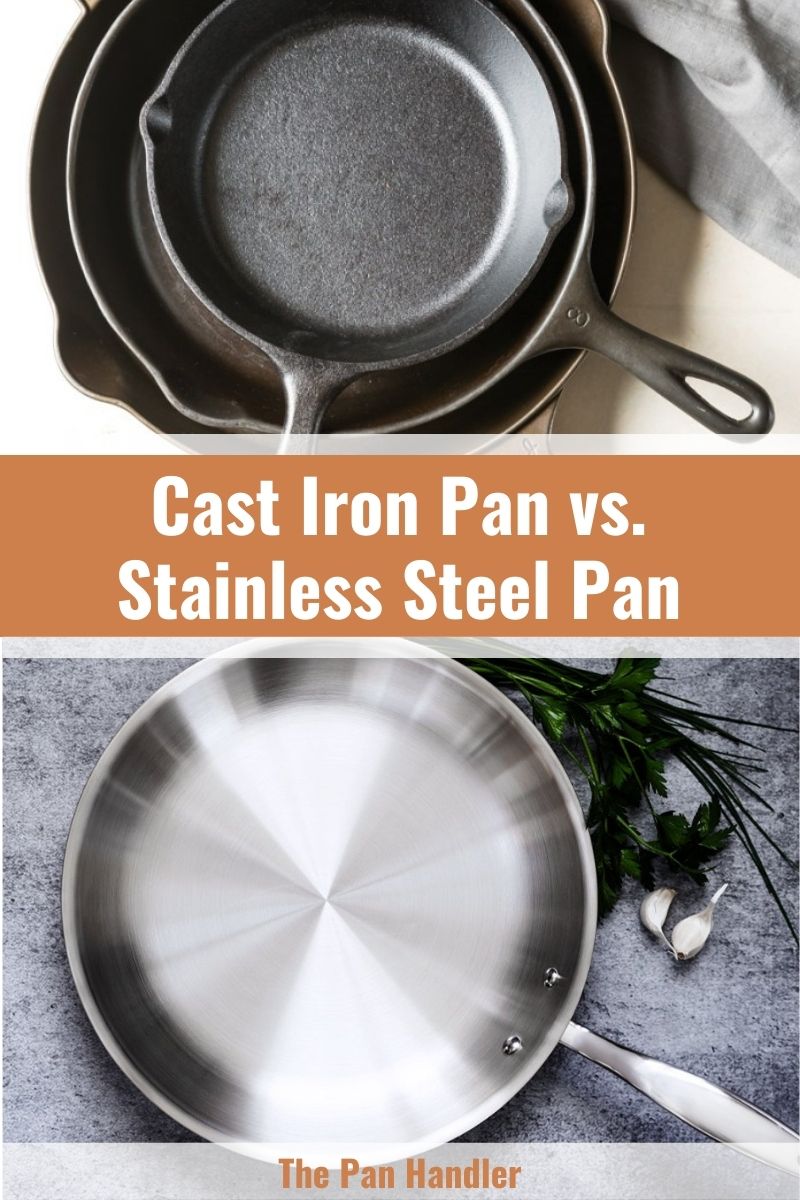We always have our favorite or preferred material for the tools we use in cooking. There is a satisfying feeling when you use your favorite pan because it is where you are most comfortable. Cast Iron pan vs Stainless Steel pan? Cast Iron and Stainless Steel pans are in high demand among households and professional chefs. Hence, which is better among the two?
Cast Iron Pan vs. Stainless Steel Pan
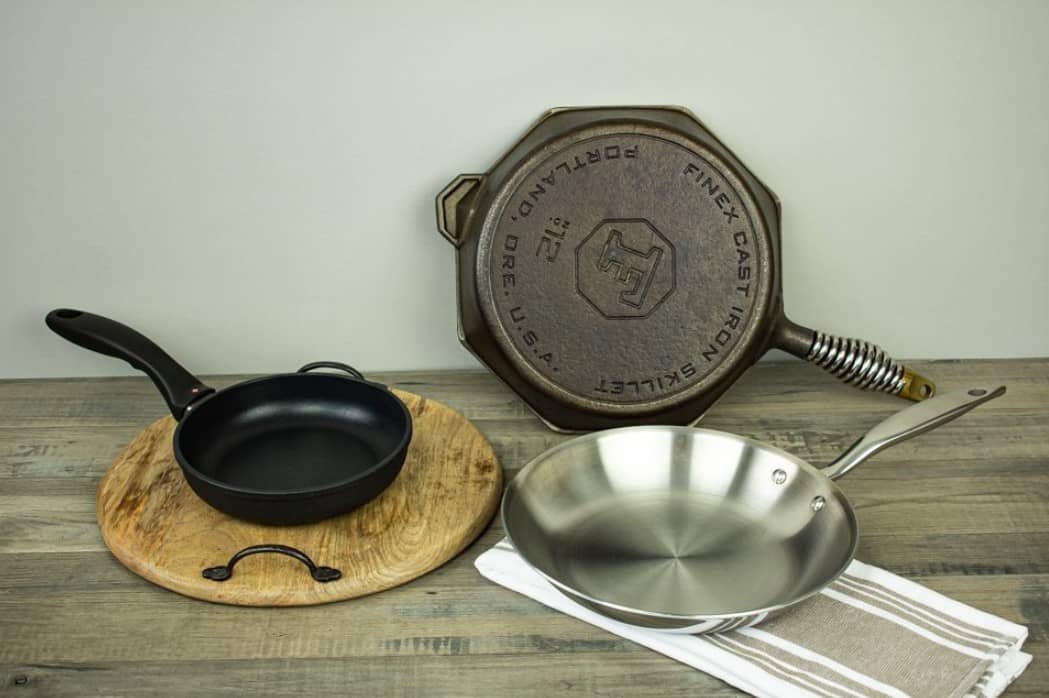
Various materials are used to make cookware, each of which gives these cookware different characteristics and properties that make them great for cooking.
Undeniably, two of the most popular types of cookware that you will see in almost every household and commercial kitchen are the cast iron pan and the stainless steel pan.
Take a quick look at the table below to know a little about them before diving deeper.
| CHARACTERISTIC | CAST IRON | STAINLESS STEEL |
| Durability | Highly durable and scratch-resistant | Highly durable and does not warp, rust, or corrode |
| Heat Retention | Can withstand high heat temperature | |
| Heat Conduction | Takes time to fully heat | Can preheat quickly |
| Versatility | Very versatile and can do almost all cooking methods | |
| Visual Appeal | Traditional look and style | Modern and sleek-looking |
| Weight | Heavyweight | Lightweight |
| Toxicity | Chemical-free | Chemical-free |
| Maintenance | Requires to be seasoned regularly | Does not need to be seasoned and low maintenance |
| Cleaning | Quite tedious to clean | Easier and quicker to clean |
| Chemical reaction | Reactive | Non-reactive |
Cast Iron Pan
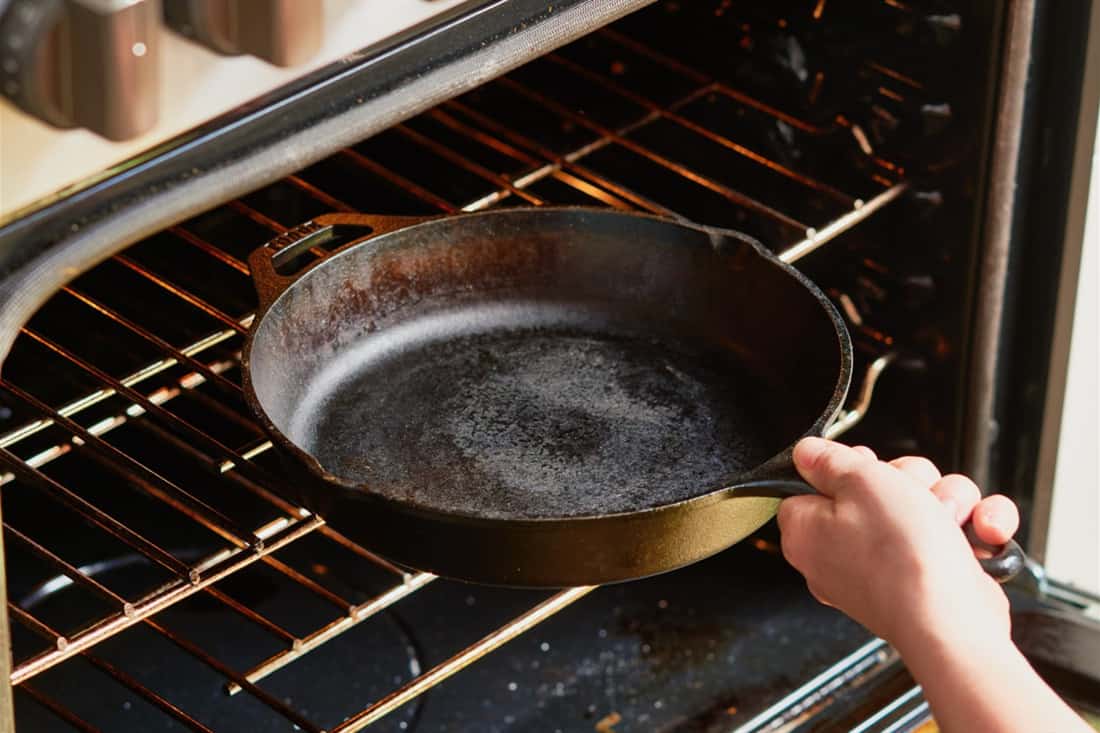
One of the oldest and considered the most traditional type of cookware is the Cast Iron pan. It is a highly durable yet heavyweight cookware that is good at retaining heat though it takes time to reach high temperatures.
A cast-iron pan is made by creating a mixture of 2% carbon and iron, drizzling it down in a mold, and then letting it cool for a while to finish. Even though it is a good quality cookware that is famous, thus, often recommended by most people, it is comparatively low-cost compared to most types of cookware.
Though it is not a good heat conductor as it takes a while, it also means it is excellent at retaining heat. The cast iron is versatile as you can use it or move it to and from the oven, stove, grill, to the point that you can also use this cookware in campfires while you are out with your friends and family for a vacation.
What is excellent about the cast iron pan is that you can pass it from generation to generation because of its sturdiness and durability.
However, this will not guarantee the longevity of its life because, as an owner, you still have to do your job to treat it well and properly care for it to avoid rusting and corrosion. This will also mean that you have to periodically season the cast iron pan to maintain its non-stick coating. As well as, avoid cooking acidic food on your cast iron pan because it is incredibly reactive to it.
You may wonder how cast iron pans are made, watch the video below and learn about the entire process:
Take a look at the table below for summarized pros and cons of the cast iron pan:
| ADVANTAGES | DISADVANTAGES |
| Good heat retention | Not a good heat conductor |
| Kitchen stove, induction cooktop, oven, and grill safe | Not dishwasher safe |
| Versatile and Durable | Prone to corrosion and rust |
| Very easy to clean | High maintenance as it has to be seasoned habitually |
| Relatively cheap | Reactive to the acidic foods |
Stainless Steel Pan
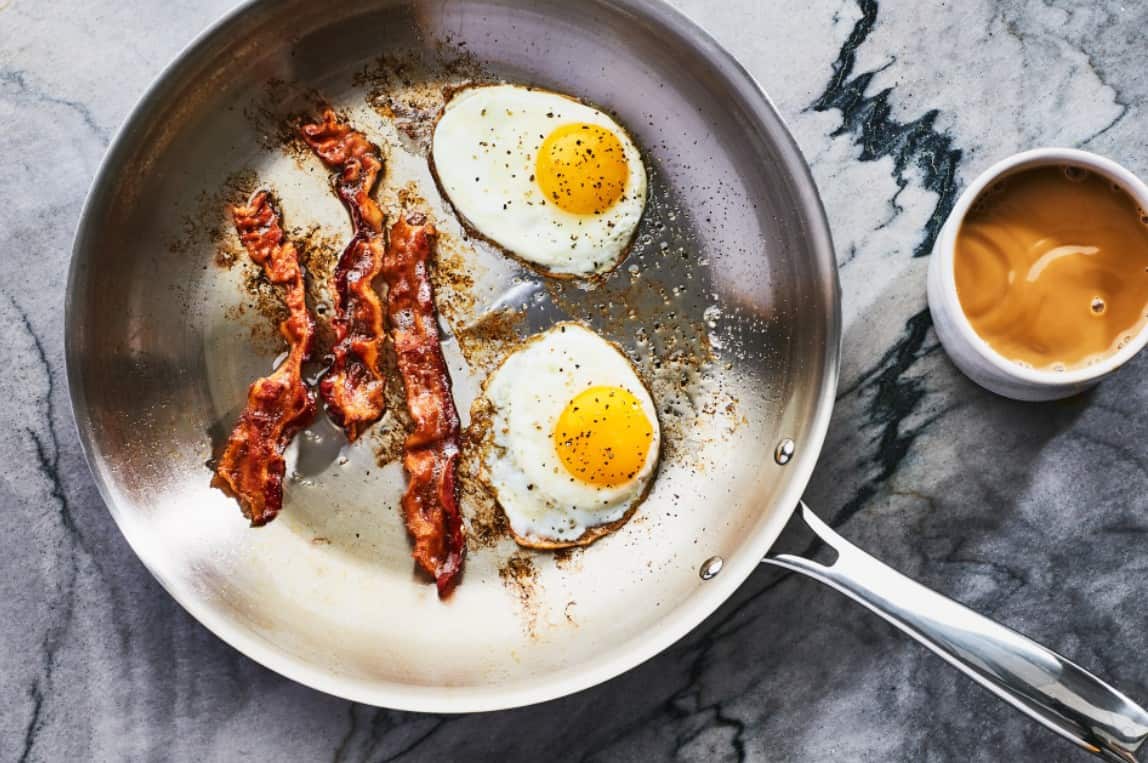
Another staple cookware that is commonly seen in many commercial kitchens and households is the stainless steel pan. It is a versatile cookware where you can do various cooking methods.
The stainless steel pan quickly heats up. However, it does not retain the heat very well as it is not as thick as the cast iron pan. Moreover, it does not also distribute the heat onto the cooking surface very well.
Despite this, it is a low-maintenance type of cookware as you will not have to season and re-season the pan regularly. Metal utensils also are allowed to be used when you cook with a stainless steel pan though it is somehow prone to scratches which will eventually be visible in due time, making it quite unattractive. In addition to that, it is also safe to use with induction and dishwasher.
The stainless steel pan is highly durable, allowing it to last for a lifetime, as most brands come with a lifetime warranty. The good thing is that it is not reactive to acidic and foods. However, it does not have a non-stick surface. Nevertheless, burnt foods will probably stick, making it difficult to clean and discoloration on the burned areas.
Take a look at the pros and cons of stainless steel pan below for a quick summary:
| ADVANTAGES | DISADVANTAGES |
| Highly durable | Non-stick |
| Non-reactive to any kind of food | Low heat retention |
| Low maintenance | Tends to be expensive |
| Good heat conductor | Discoloration easily occurs |
| Lightweight | Does not evenly distribute the heat |
| Induction and dishwasher safe | A bit difficult to clean or remove burnt food |
| Metal utensils friendly | Visible scratches |
5 Care Guide Tips for Cast Iron Pan
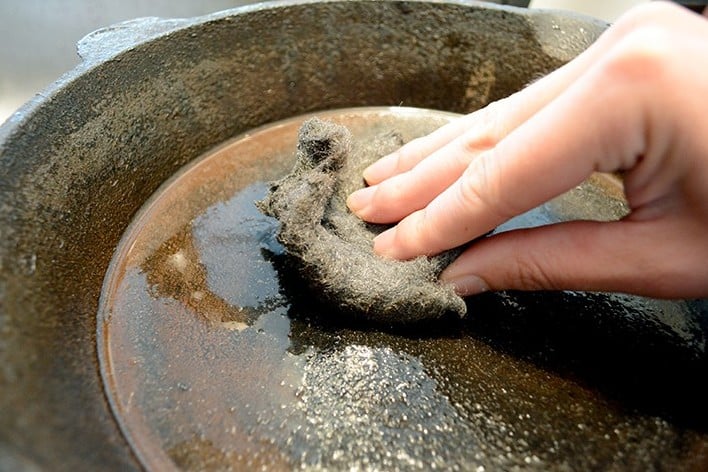
To ensure that your cast iron pan will take years before you feel the need to replace it, you must learn how to care for it properly.
All things can reach their end, but you can help it extend its lifespan by knowing how to manage for it to avoid any rust, corrosion, and a lot more defects that could happen.
Always keep in mind these care guide tips to ensure that your cast iron pan is always in its glory.
Avoid acidic food
Try to avoid cooking any dishes or food that is acidic because the cast iron reacts to it.
Avoid using metal utensils
It is not advisable to use metal utensils as they can scratch the surface and potentially damage the seasoning that provides a smooth, nonstick surface. Use utensils that are not made out of sharp materials, such as wooden utensils, silicon, and rubber utensils.
Seasoning is a must
It has already been established that adequately caring for your cast iron pan will also mean that you have to season it periodically. And the seasoning process also gives the pan its nonstick properties.
Store properly
Ensure that your cast iron pan is dried and stored adequately after washing.
Avoid soaking or using a dishwasher
Avoid soaking the cast iron pan with water as it may cause it to rust or corrode. Do not also put the cast iron pan in the dishwasher to prevent any damage that might occur
4 Care Guide Tips for Stainless Steel Pan
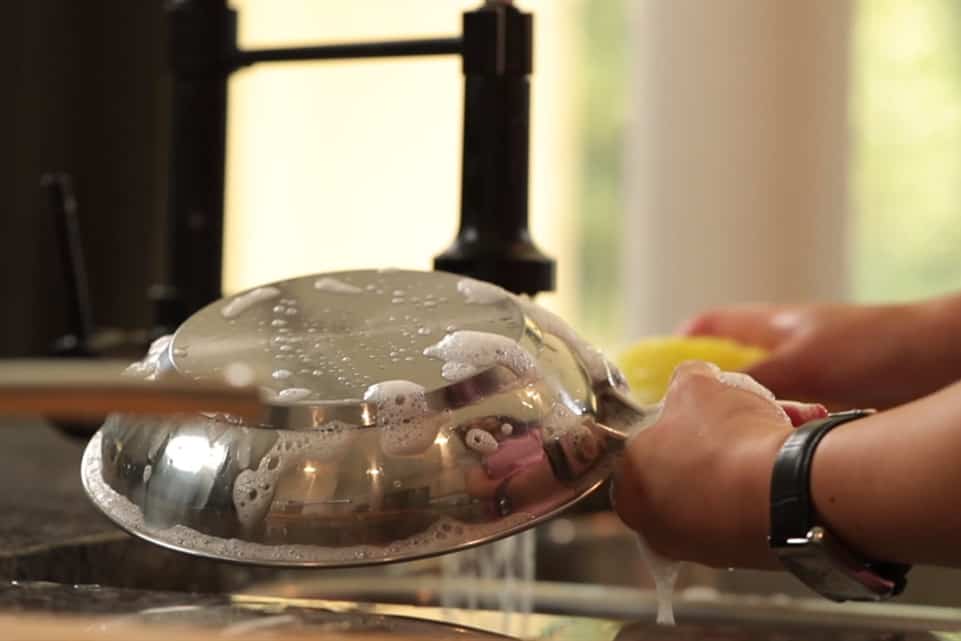
Even if you purchase a stainless steel pan that also comes with a lifetime warranty, that does not give you the pass to carelessly use your stainless steel pan. Keep in mind the tips below on how to properly care for your stainless steel pan.
Do not rely on the dishwasher completely
Although most brands specify that it is safe to use the dishwasher to clean your stainless steel pan, that does not necessarily mean that you will do it almost every day. Regular use of the dishwasher will eventually wear out your stainless steel pan.
Avoid abrupt change of temperature
Make sure that your pan has cooled down before you wash it. Do not be in a rush because when your pan has been exposed to abrupt temperature changes, it will most likely crack or warp eventually.
Dry the pan properly
Do not let your pan dry naturally, as it will only build up water spots. Make use of a kitchen towel to wipe out the water off the pan.
Do not use a ball of steel wool
It is not advisable that you use a ball of steel wool to clean your stainless steel pan and remove the burnt food that was stuck on it. The sharp edges of the steel wool will only scratch the shiny surface of your pan.
Cooking Method For Cast Iron Pan and Stainless Steel
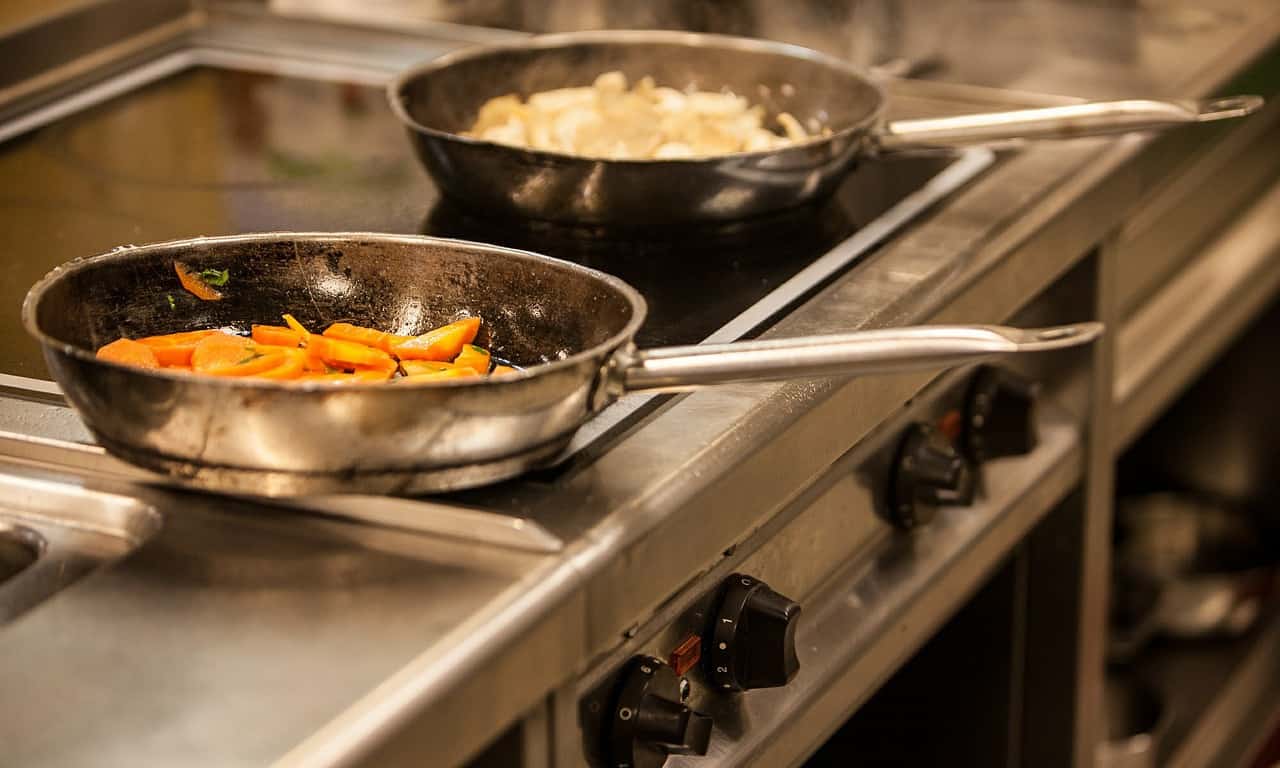
Since a cast iron pan and a stainless steel pan are both versatile, you can utilize them for almost all cooking methods.
They can also be a good substitute if you do not have the type of cookware mentioned in the recipe. That is how versatile these two cookware are.
You can take a look at the table to see which cooking methods and other things you can try on with these two pieces of cookware:
| CAST IRON PAN | STAINLESS STEEL PAN |
| Baking | Braising |
| Frying | Pan Sauces |
| Roasting | Perfect for everyday use |
| Stovetop to oven and vice versa | Searing
|
Summary
You now know a lot about the differences and similarities between cast iron and stainless steel pans. Hence, when a newbie asks you about a Cast Iron pan vs Stainless Steel pan, you should be able to give an unbiased review. But regardless, it is always about your preference when it comes to cooking. It is essential that you feel comfortable so that the dish will come out scrumptious.
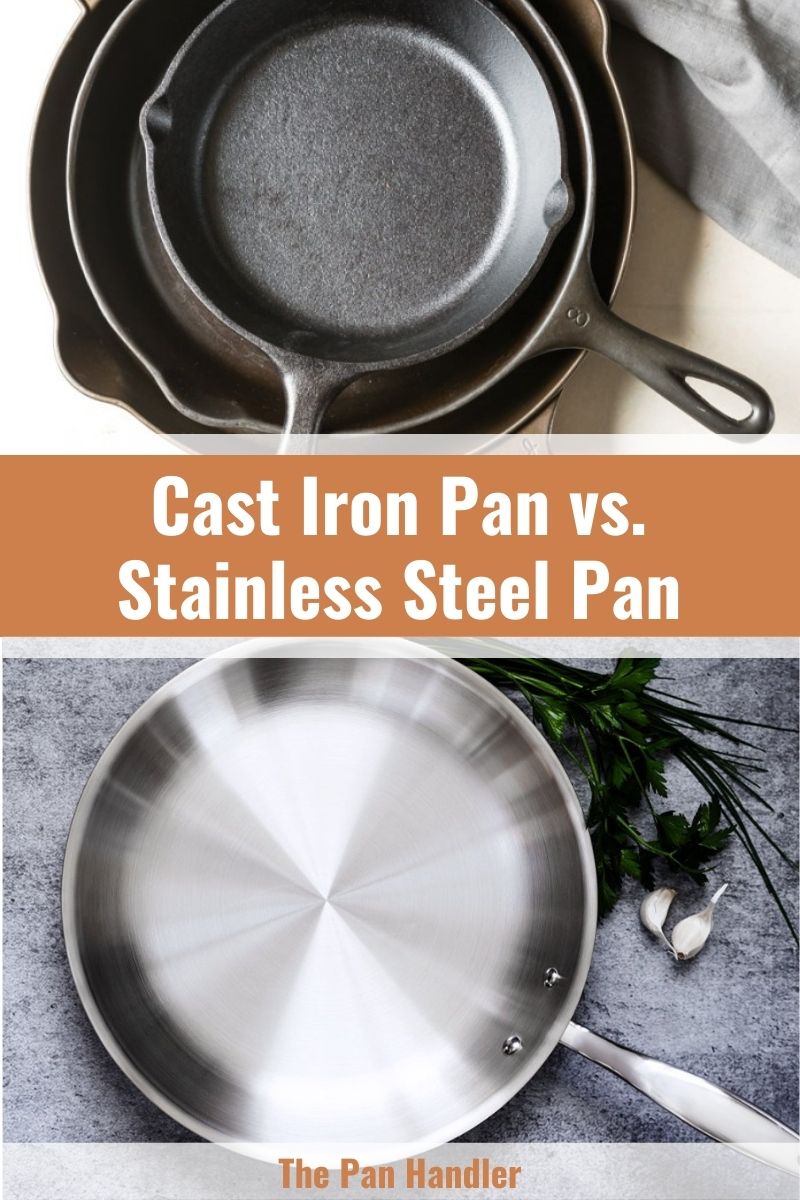

Michael Johnson is the founder of Pan Mastery, Inspired by his blacksmith grandfather’s legacy has a deep appreciation for hand-crafted pots and pans, he provides invaluable guides, reviews, and recipes to enhance your culinary journey.

